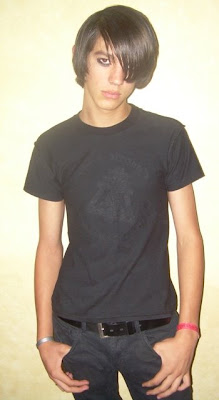
A quick disclaimer: every shot and clip here was stolen from John K's blog, the 12/8/08 installment of "John K Stuff. " John delivered a marvelous analysis of this scene from "The Old Gray Hare," which I won't attempt to improve on. To tell the truth, I have no idea what I want to say about this animation, I'm only writing because it's one of my all-time favorite Clampett scenes, and I can't let the occasion of seeing it discussed go without comment.
http://www.cartoonthrills.org/blog/Clampett/45OldGrayHare/bugsdeath1short.mov

This is the famous Elmer head roll, animated by Bob McKimson. Bugs is brilliant as the dying rabbit, but the scene is stolen by Elmer's reactions. Elmer underplays the scene, and Bugs overplays it, and yet our eyes are mostly on Elmer...proof, if it was needed, that good reactions are reliable scene stealers.
A lot of directors like to play reactions on a one-shot, which is usually a mistake. People like to see the give and take between the action and re-action, and cutting is a distraction. I remember that Jackie Gleason almost always did his slow burns in two-shots.

Elmer slowly rolls his head right and left in perspective. 2D animators hate this because flaws in the inbetweens always show up when you go this slow. This didn't deter McKimson who was a killer draughtsman.
There are so many delights in Elmer's character design. The big hat emphasizes the head rolls nicely. McKimson could have gone for a perspective distortion by leaning the hat far into camera as it rolled, but he wisely underplayed it. Come to think of it, the whole character design is an example of underplaying the extreme and flamboyant elements. The huge head and tiny, peanut body are sooooo graphically drastic, but Clampett softens them, makes them appealing.

I love the way Elmer reacts to what Bugs is saying. Whenever Bugs has an accent in his animation, Elmer does a quick recoil then drifts back to his previous pose. I love the hand hesitantly patting Bugs' stomach. I love the way Elmer looks offscreen when the delusional Bugs points something out, then drifts back to his original pose. Drifting back after a quick movement is a powerful technique. I love the way Elmer looks at Bugs with those impassive, old-people's eyes. I don't think I've ever seen those kind of eyes in any other Hollywood cartoon.
In the first three pictures at the top, I love the way Elmer seems to be studying Bugs. I'm getting off the subject, but in real life I love the way an irritated person will sometimes study the guy who's irritating him. He'll study him like a scientist for a moment, and it all seems so academic and scholarly, then all of a sudden the irritated person will leap up and try to strangle the other guy. I love it when people on the street try to study each other.

It's amazing that Clampett, who has a reputation for being wild and over-the-top, is also the master of subtle, under-the-top, as in this sequence. Clampett makes you laugh and cry, always in the same cartoon. John K is the same way. No doubt John was influenced by cartoons like this, where subtle acting and broad action go hand in hand.












.JPG)


































